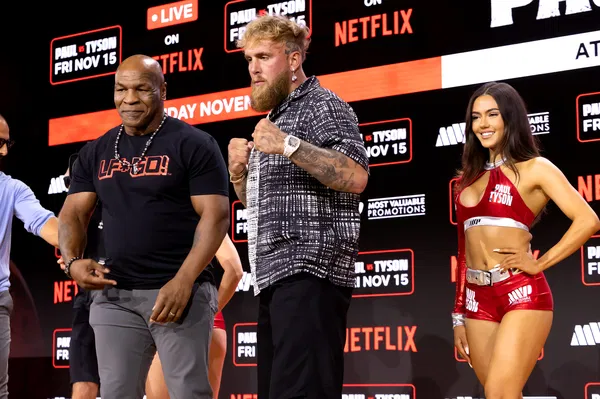The recent Jake Paul vs. Mike Tyson boxing match stands as a landmark event in modern boxing, achieving several records despite being surrounded by controversy. Jake Paul, widely recognized as “The Problem Child,” secured a staggering $40 million payout, marking the most lucrative fight of his career. This event also highlighted the evolution of female boxing, as Amanda Serrano and Katie Taylor’s fight reached an unprecedented level of success. Their bout garnered 50 million viewers, establishing itself as the most-watched women’s combat sports event in history while delivering record-setting paydays for both fighters.
The main event was held at AT&T Stadium in Texas, attracting a live audience of 72,000 fans. While the fight itself left many disappointed in terms of action, it proved to be a massive success for the organizers. Streaming on Netflix, the event smashed platform records with nearly 60 million households tuning in. During the main event, viewership peaked at 65 million households, causing widespread streaming outages. Despite these impressive numbers, the Tyson-Paul fight fell short of the astronomical viewership achieved by some of boxing’s most legendary bouts in history.

When viewed against the backdrop of historic fights, the November 15 matchup does not measure up to iconic contests such as Muhammad Ali’s rematch with Leon Spinks in 1978. That fight was broadcast to an incredible 2 billion viewers worldwide, with Ali reclaiming his heavyweight titles before a crowd of 60,000 at the Louisiana Superdome. Ali’s legendary career continued to draw immense attention, with his 1980 bout against Larry Holmes, often referred to as his “Last Hurrah,” also attracting nearly 2 billion viewers globally. Although the fight saw Holmes decisively defeat an older and less prepared Ali, audiences around the world were captivated by the chance to witness “The Greatest” in action once more.
Despite its success on Netflix, the Tyson-Paul fight pales in comparison to these historic events. Technical issues during the streaming may have contributed to its limited global reach, but even without these challenges, it was far from the record-breaking viewership numbers of Ali’s era. Iconic bouts like Ali’s exhibition match against Antonio Inoki in Tokyo and the legendary “Rumble in the Jungle” against George Foreman each drew over 1 billion viewers. These events are remembered not only for their sporting significance but also for the cultural and historical impact they carried, making them among the most-watched live broadcasts of all time.
More recently, the boxing world witnessed another modern milestone with the 2017 fight between Anthony Joshua and Wladimir Klitschko. Held at Wembley Stadium, this bout drew a record crowd of 90,000 fans, with an additional 10.43 million viewers in Germany alone. Globally, the fight was viewed by approximately 500 million people, making it the most-watched boxing match in the modern era.
While the Tyson-Paul fight cannot be compared to such legendary or modern milestones, it still represents a significant achievement for today’s boxing landscape. With the sport facing declining popularity and the rise of illegal streaming, this bout reignited global interest in boxing, generating widespread conversations and bringing new attention to the sport. For many, it marked an important step toward revitalizing boxing’s presence on the world stage.
Though the event has drawn criticism for its quality and showmanship, it demonstrated the enduring appeal of boxing in the digital age. Fans and commentators continue to debate whether this fight signals a new era for boxing or simply a temporary spectacle. Regardless, the Tyson-Paul matchup has set a high bar for modern boxing events, reflecting its ability to draw a massive audience and stimulate renewed interest in the sport.